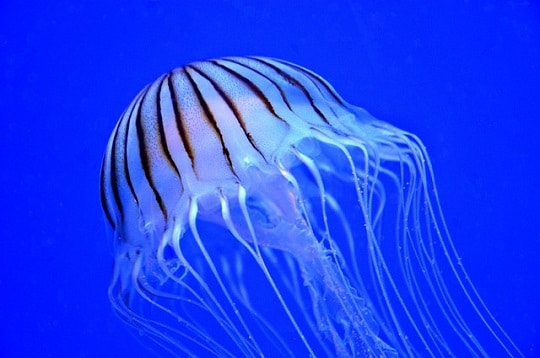Cnidaria is a class of animals that are found in marine and aquatic environments. They come under the coelenterate phylum.

Cnidaria Characteristics
- The cnidarians are defined as the “diploblastic metazoa with tissue grade organization. They are referred to as the simplest metazoan.
- The body wall comprises two layers viz, ectoderm and endoderm. Hence, it is called diploblastic. Higher animals have a third layer, i.e., mesoderm.
- The outer layer of the ectoderm forms the epithelium or outer covering, and the inner layer of the endoderm forms the gastrodermis.
- Mesoglea, a gelatinous substance, is present in between these two layers, which is glued to keep these two layers intact with each other.
- The mesoglea layer consists of amoeboid cells, which are derived from the ectoderm -the outer covering of the body.
- Mesoglea is thin in polyps and thick in medusa. The thick mesoglea helps in locomotion, which is essential for the purpose of buoyancy.
- The individuals are radially or biradially symmetrical, e.g., sea anemones.
- The cnidarians are sedentary or free-swimming and solitary or colonial.
- They are mostly aquatic, mostly marine, except for some freshwater forms such as hydra.

They have a continuous inner body space or cavity known as a gastrovascular cavity or the coelenteron. It represents both the enteric or digestive cavity and the general body cavity.
The coelenteron opens to the outside by an opening or aperture called ‘stoma,’ which is surrounded by tentacles.
These tentacles are used in capturing the food and ingestion process. The tentacles are short and slender and encircle the mouth in one or more whorls.
The mouth opening is called the ‘hypostome,’ which is responsible for both ingestion and egestion.
The tentacles bear nematocyst, which has the purpose of capturing the prey, ingestion, and defense. These tentacles are also present in the body surface, which also serves as a function of adhesion to the substratum.
These nematocysts, which are present in the body walls, are called ‘cnidocytes.’ Hence, the name cnidarians is assigned to this phylum.
Each cnidocyte cell contains a fluid-filled membranous capsule called ‘cnida.’ Cnidocytes help in defense and also in the capture of prey.
The endoskeleton or exoskeleton is a common occurrence in cnidarians.
The cnidarians are usually carnivores that feed on another animal’s body.
Digestion is extracellular as well as intracellular, and the anus is absent.
The cnidarians exhibit the phenomenon of polymorphism with very few exceptions; the important ones are zooid forms, which are polyp and medusa. Polyps are sessile and asexual zooids, while the medusa is a free-swimming and sexual zooid.
The polyp and medusa serve different functions, showing polymorphism. The polyp gives rise to medusa asexually, and medusa gives rise to the polyp sexually.
Besides the nerve nets, the medusae have nerve rings and ganglia around the margin of the bell-like structure found in the medusae.
Sensory structures like statocysts are present as medusoid forms.
The cnidarians have both modes of reproduction: asexual as well as sexual reproduction.
Asexual reproduction is through budding, fragmentation, and regeneration. The cnidarians possess the power of budding to form the next progeny of their generation.
Sexual reproduction takes place through the formation of gametes. A ciliated planula stage is usually present in the life history of these organisms.
The nervous system comprises one or more networks of nerve cells or neurites located in the ectoderm and endoderm.
Neurons are interconnected to form nerve nets, one in the epidermis and the other in the gastrodermis.
The two nerve nets are then joined by the neurons that cross the mesoglea layer.
The nerve impulse conduction is through diffused conduction in cnidarians.
The nerve impulse in cnidarians travels in only one direction.
Respiratory, circulatory, and excretory systems are still wanting.
The life history of cnidarians possesses the phenomenon of alternation of generations or metagenesis, which includes the asexual polypoid, sessile generation alternates with the sexual medusoid, free-swimming generations.
A polyp is a hydroid form that is sessile with mouth-up orientation.
Medusa is an umbrella or bell-shaped with a mouth-down orientation. It swims by constricting the bell in an aquatic medium.
Cnidarians are generally unisexual, but some are bisexual. The fertilization is external.
Cleavage is holoblastic, and development is indirect. It is further classified into three subgroups:
- Hydrozoa
- Scyphozoa
- Anthozoa.
Some examples are Obelia, hydra, sea pen, sea fan, Bella, Aurelia, etc.